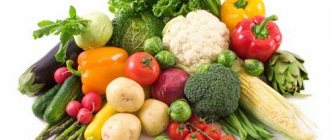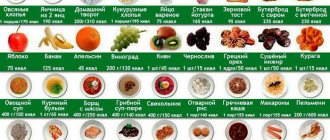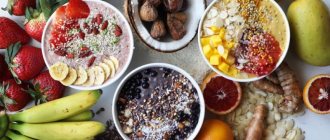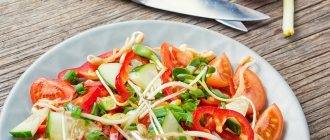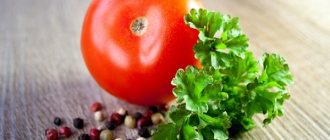There are probably no people who have not heard of vegetarianism. A person who has never tried this style of eating may think that it is tasteless, bland, or that one cannot get enough of such food. To prove that healthy and proper food can be varied, tasty and satisfying, we have prepared vegetarian menu for the week.
Regardless of how we feel about living a meat-free life, scientific research shows that limiting animal proteins is beneficial for human health.
People come to vegetarianism for various reasons. I became a vegetarian by choice to improve my health. Others turn to vegetarianism for ethical or religious reasons.
Over time, I learned to harmoniously combine my food preferences with the preferences of others . At work, the employees are already accustomed to the fact that I don’t eat meat, and during the lunch break many interesting discussions arise on the topic of proper nutrition. I’m the only vegetarian in my family, so I cook meat dishes separately. If I eat porridge with salad, then I add cutlets to the rest of the family members.
Thanks to the chosen eating style, my health has improved, my energy has increased, and I am always in a good mood 
It is important to note that there are several types of vegetarianism:
- veganism - only plant-based nutrition, sometimes even honey is not consumed;
- lacto-vegetarianism – plant-based diet plus various dairy products;
- Lacto-ovo vegetarianism - consumes plant foods, eggs, and dairy products.
The vegetarian menu we offer for the week belongs to the most democratic type - lacto-ovo vegetarianism. Try this menu and perhaps vegetarianism will not be scary at all, but tasty, enjoyable and healthy!

Shopping list
for a vegetarian menu for the week
Vegetables, fruits, greens
Arugula – 1 large bunch Cherry tomatoes (can be replaced with regular ones) – 600 grams Tomatoes – 1 kg. Radishes – 10 pcs. Lemon – 3 pcs. White cabbage – 1.5 kg Red cabbage – 200 gr. (replaceable with white cabbage) Cauliflower - 800 g (frozen can be used) Broccoli - 800 g (frozen can be used) Dried mushrooms - 50 g. Oyster mushrooms – 2 kg Frozen mushrooms – 600 gr. (replaceable with regular ones) Beets – 1.5 kg Potatoes – 3.4 kg Carrots – 20 pcs. Onion – 10 pcs. Green onion – 1 pc. Red onion – 2 pcs. Leeks – 2 pcs. Apple – 10 pcs. Cucumbers – 8 pcs. Garlic – 5 heads Sweet pepper – 3 pcs. (2 pcs. red and 1 pc. yellow) Frozen pumpkin – 80 gr. Banana – 2 pcs. Celery stalk – 5 pcs. Avocado – 2 pcs. Cilantro – 1 bunch Parsley – 3 bunches Dill – 2 bunches Mint – 1 sprig Lettuce – 400 gr. Zucchini or zucchini – 7 pcs. Chili pepper – 1 pc.
Nuts, seeds, dried fruits
Pine nuts – 2 tbsp. spoons Prunes – 100 gr. Walnuts –200 gr.
Dairy and eggs
Milk - 2 l Butter - 300 gr. Cottage cheese – 1.5 kg Hard cheese – 350 gr. Cream 10% - 1 l Sour cream - 3 tbsp. l. Kefir or yogurt – 1 l. Eggs – 10 pcs.
Groceries, etc.
Oatmeal – 700 gr. Sugar –500 gr. Brown sugar – 120 gr. Vanilla sugar – 1 sachet Honey – 1 tbsp. Vegetable oil -600 ml (sunflower) Olive oil - 400 ml Flour -350 gr. Baking powder - 1 sachet Boiled condensed milk - 4 tbsp. Soy sauce – 3 tbsp. Buckwheat – 2 cups Vinegar 9% – 7 tbsp. Peas (dry) –400 gr. Mayonnaise – 2 tbsp. Pearl barley – 400 gr. Millet – 1 cup Barley – 2 cups Lentils – 70 gr. Dry beans – 170 gr. Chickpeas – 120 gr. Canned corn – 1 can Canned beans – 1 can Tomatoes in their own juice – 1 can (420 g) Olives – 2 cans Canned or fresh apricots – 6 pcs. Tomato puree – 8 tbsp. l.
Spices and seasonings
Ground cinnamon - 1 sachet Coriander - 1 sachet Thyme - 2 tsp. Ground paprika – 0.25 tsp. Bay leaf - 2 pcs. Cumin (jeera) or cumin – 3 tsp. Turmeric – 0.25 tsp. Oregano – 1 tsp. Allspice – 5 pcs. Hot pepper - to taste Black pepper - bag (or freshly ground) Salt - to taste
- The vegetarian menu for the week consists of products of plant origin, mainly grain products, vegetables, fruits, and nuts. Dairy products and eggs can be added. Animal meat, poultry, and fish are completely excluded.
- No matter how you decide to eat with or without meat, your diet should always be complete and balanced. The main question that arises with this style of nutrition is replenishing the amount of protein the body needs.
- Sources of protein include dairy products, eggs, legumes (soybeans, beans, peas), nuts, spinach, kohlrabi, cauliflower and they must be present in the daily diet.
- Try to have a salad of fresh vegetables and fruits on your menu every day. Salad is a healthy, tasty and low-calorie food, either on its own or as an addition to any main dish for better digestion and absorption. Let there always be dried fruits, nuts, and fresh fruits on the table. My family also likes this tasty and healthy food.
Basic principles and types of vegetarian diet
A vegetarian diet in its principles is in many ways similar to Christian fasting. Most likely, many have encountered them and know what they mean. The essence of this diet is to avoid eating animal and bird meat, fish and seafood. Her rules are based on a more gentle lacto-ovo vegetarianism, in which dairy products and eggs are allowed. Thus, this principle of losing weight is suitable even for those who have decided to give up meat dishes for the first time. In addition, if it is still very difficult to part with meat, then at first you can create your own menu for 2 weeks, which will include a small amount of it. Then gradually reduce its inclusion in the diet until completely excluded.
Basic rules of a vegetarian diet:
- exclude meat, fish and seafood from the diet;
- do not give up dairy products and poultry eggs to compensate for the lack of vitamin B12;
- eat foods of plant origin: berries, vegetables, fruits, herbs, cereals, nuts, beans, whole grain or bran bread;
- dairy products should contain a small amount of fat;
- use lemon juice or vegetable oil to dress salads;
- during the diet you need to drink at least two liters of pure mineral water without gas;
- reduce to a minimum the consumption of sweet, salty, fried, various types of preserves and marinades.
The duration of such a diet can be 1 week, 2 weeks or even a month. It is not recommended to adhere to the principles of such nutrition for any longer. If after the first week the results are quite satisfactory, then you can limit yourself to this period. If you want to extend the diet, use the two-week nutrition plan.
You need to eat on such a diet three times a day, and for breakfast it is better to set aside time from 7 to 9 am, lunch to be held between 11 and 13 pm, and for dinner leave time from 16 to 18 o'clock. After six o'clock in the evening, eating, as on any other diet, is prohibited. Only a small snack before bed is allowed in the form of any unsweetened fruit or a glass of low-fat fermented milk product. If you really want to eat in between main meals, you can snack on an apple, a small amount of nuts or seeds.
Leaving the diet should also not be abrupt, but gradual. Especially in cases where it lasted more than 2 weeks. To do this, you can first introduce higher-fat dairy products, then you can add fish to your diet. On about the third or fourth day, you can try boiling a small piece of lean meat, preferably chicken, turkey or beef.
It is recommended to repeat this diet no more than once every two months.
There are several types of vegetarian diet. And depending on what results you want to get, you need to choose one or another type of power system:
- lacto-vegetarian diet - allows you to eat dairy and fermented milk products;
- lacto-vegetarian diet - characterized by the addition of only milk to the diet as a source of calcium;
- lacto-ovo-vegetarian diet - a principle of weight loss that allows the use of dairy products and poultry eggs;
- vegetarian diet for athletes - based on a balanced and strict distribution of proteins, carbohydrates and fats;
- vegetarian protein diet - involves consuming large amounts of protein, which is mainly found in dairy products, legumes, seeds, nuts, eggs and so on.
Sample menu for a vegetarian (not an athlete) for a week
For people who maintain a healthy lifestyle and take care of their appearance, we can recommend a balanced diet for vegetarians (ready-made menu).
The first day:
- Breakfast: barley porridge with milk, toast with jam, natural coffee without sugar.
- Second breakfast: zucchini pancakes, low-fat yogurt.
- Lunch: pureed pea soup, potato zrazy stuffed with eggs and green onions, lightly sweetened fresh fruit compote.
- Afternoon snack: oatmeal cookies, banana.
- Dinner: vegetable stew, fruit salad with yogurt, herbal tea with honey.
Second day:
- Breakfast: wheat porridge with milk, pancakes (rye flour) with cottage cheese, milk.
- Second breakfast: biscuits, a glass of yogurt.
- Lunch: vegetable soup with dumplings and croutons, potato gratin, dried fruit compote.
- Afternoon snack: cottage cheese casserole, toast with jam.
- Dinner: spaghetti with baked vegetables, apple, green tea.
Day three:
- Breakfast: buckwheat milk porridge, toast with tofu cheese, black tea.
- Second breakfast: apple pancakes, yogurt.
- Lunch: vegetable soup with barley, ratatouille, dried fruit compote.
- Afternoon snack: apple, natural juice.
- Dinner: stewed eggplants with beans, orange, kefir.
Day four:
- Breakfast: omelet with zucchini, tomatoes and herbs, feta cheese, herbal tea.
- Second breakfast: toast with hummus, green tea.
- Lunch: lean borscht, buckwheat porridge with mushrooms, natural juice.
- Afternoon snack: diet cookies, jam, milk.
- Dinner: vinaigrette, apple, kefir.
Day five:
- Breakfast: cottage cheese casserole with raisins and dried apricots, banana, milk.
- Second breakfast: fruit salad, toast, yogurt.
- Lunch: lean cabbage soup, radish salad with low-fat sour cream, dried fruit compote.
- Afternoon snack: fruit salad, juice.
- Dinner: stewed vegetables with mushrooms, toast with jam, yogurt.
Day six:
- Breakfast: toast with squash caviar, boiled egg, black tea.
- Second breakfast: biscuits with fruit salad.
- Lunch: pumpkin soup, vegetable sauté, fruit cocktail.
- Afternoon snack: muesli with banana.
- Dinner: vinaigrette, buckwheat porridge balls, green tea.
Day seven:
- Breakfast: banana pancakes, toast with cottage cheese, yogurt.
- Second breakfast: dried fruits and nuts.
- Lunch: pureed pea soup, boiled potatoes with mushrooms, fresh fruit compote.
- Afternoon snack: nuts, fruits.
- Dinner: vegetable casserole with mushrooms, cottage cheese, tea.
Attention! A vegetarian menu for the week, compiled by a nutritionist, will allow you to optimally balance it so that the body is not only cleansed, but also receives the necessary complex of nutrients.
How to replace tea and coffee
Vegans practically do not drink black tea and coffee; the following are considered alternative drinks:
- herbal tea,
- chicory,
- barley concentrate,
- or natural juice.
We should not forget that the menu is only approximate; every vegan will be able to choose recipes from their favorite products.
Again, all the dishes presented are for home cooking; in fact, the diet can be diversified with the help of industrial products. In big cities there are special vegan stores where you can buy sausages, sausages, baked goods and sweets that do not contain animal products.
Ready-made menu for vegetarians for weight loss - vegetarianism on a diet
Among fans of the now popular healthy lifestyle, there are more and more adherents of the vegetarian diet. Almost every person knows about the benefits of vegetables and fruits.
The fiber contained in plant foods helps normalize the functioning of the gastrointestinal tract. And microelements - potassium and magnesium regulate water metabolism occurring in the body. This is why a vegetarian diet for weight loss is considered optimal. What should the diet be like for vegetarians who support a plant-based diet as a means of losing weight?
Let's look at a sample menu:
- Breakfast: buckwheat pancakes, low-fat yogurt, herbal tea with a teaspoon of honey.
- Second breakfast: rye bread toast, a piece of cheese, natural juice.
- Lunch: vegetable soup with beans, salad mix with cucumber, tomato, tofu cheese, olive oil and lemon juice; uzvar.
- Afternoon snack: a handful of dried fruits with nuts, milk.
- Dinner: stewed cabbage with mushrooms, with olive oil, kefir.
In order to create an optimal menu for weight loss for a week, it is best to seek advice from a specialist.
If a person who decides to lose weight draws up such a menu on his own, he needs to take into account the recommendations of nutritionists:
- Exclude fried, smoked, salty foods from your daily diet.
- To refuse from bad habits.
- Eat small meals.
- Calculate the total calorie content of the finished dish.
- Consume at least two liters of water daily.
Important! The amount of vegetables consumed per day should be 1-1.5 kg for an adult. It is advisable to eat vegetables and fruits of different colors in your diet, because the more colorful the finished dish is (salad, stew, sauté), the higher the content of useful components in it will be.
Specialist commentary – Sokolovskaya Marina Evgenievna, nutritionist, St. Petersburg:
“In fact, the menu for vegetarians can be very varied. The diet does not end with vegetables and fruits; many people learn to cook familiar foods on their own. For example, now there are many recipes for vegetarian bread, cottage cheese, jelly and other delicious dishes that will complement your diet. A vegetarian menu must include daily consumption of foods with calcium. It is found in cereals, broccoli, dairy products, soy cheese, and figs. If a vegetarian does not have the opportunity to consume eggs and dairy products, it is necessary to take it additionally, this is very important. In this case, eat soy, nuts, beans and vegetables. That is, we can conclude that if you properly balance your diet, find the right replacement for meat products in order to get all the necessary elements for the normal functioning of the body and lead a healthy lifestyle, you can lose excess weight without much difficulty.”
How a Vegan Food List Can Help Newbies
It often happens that when you buy ready-made food, you discover, much to your surprise and irritation, that the recipe actually used a non-vegan ingredient. In such situations, you get the feeling that being a vegan and following a vegan diet in this world is very difficult.
Don't be discouraged, take matters into your own hands! You don't have to be a super cook, but to make sure you're sticking to a vegan lifestyle while getting all the protein, carbs, fats, and calories you need to be healthy, you should make a list of vegan foods before heading to the supermarket.
Conclusion
A vegan diet offers many health benefits. However, you should be thoughtful about switching to a plant-based diet. Start planning your meals. We recommend taking a hard look at all the foods stored in your kitchen cupboards - make sure you're getting the macronutrients you need and replacing animal products with the most nutritious plant-based alternatives.
Translation: Farida Seidova
Articles on our website are presented for educational and informational purposes only. We do not recommend using article materials as medical advice. If you decide to take dietary supplements or make fundamental changes to your diet, first consult with a specialist.
Dinner
A hearty breakfast should be continued with something equally healthy, for example, soup. There are many recipes, but the essence is approximately the same - cook vegetable, mushroom or any other broth, and then add the rest of the ingredients. Don’t forget to add various spices and seasonings to the soup; they will only improve the taste of the dish and give it an unforgettable aroma.
Vegan cutlets with a delicious side dish will perfectly satisfy your hunger. As ingredients for cutlets, you can take anything from beets to oatmeal. Let your imagination run wild and find your favorite recipe. No one limits you in the side dish either; pasta, rice, potatoes or a mixture of vegetables are suitable.
Experiment and make vegan burgers. To do this, you will need to buy or make vegetarian buns, and between them put whatever your heart desires. Don't forget the tofu and vegan patties, they make a delicious addition to your burgers. This dish will diversify your menu for the week, while replacing harmful public catering with a healthy alternative.
No one forbids using cereals from breakfast recipes for lunch; they are perfect for a lunch break and will fill your body with energy.

